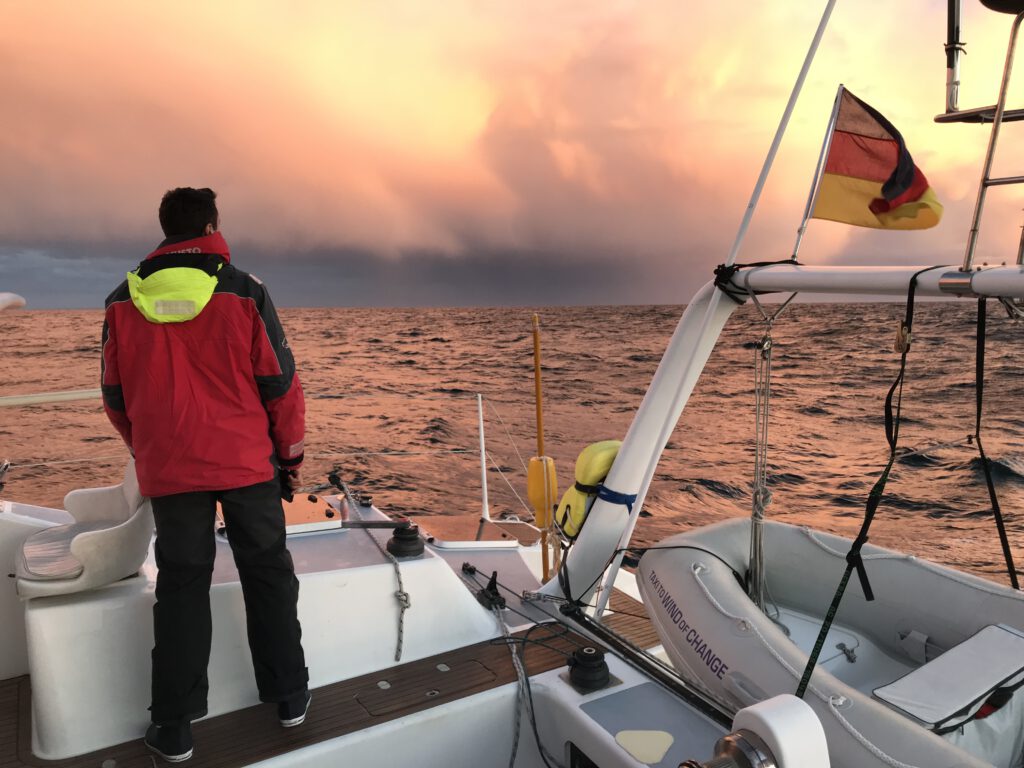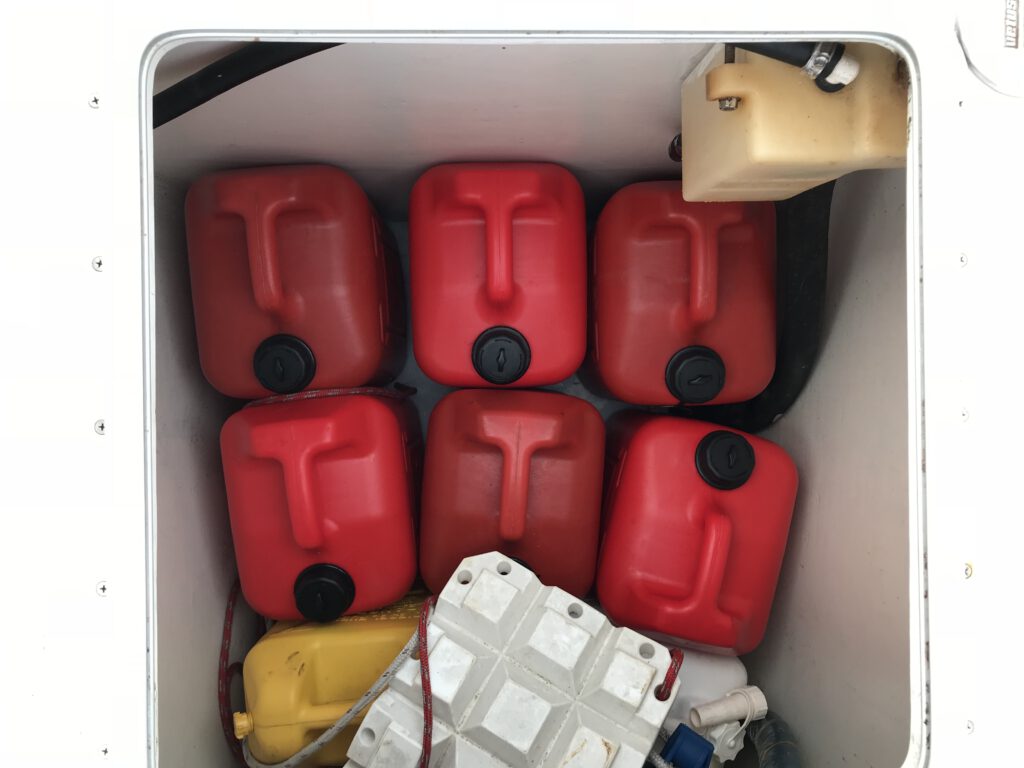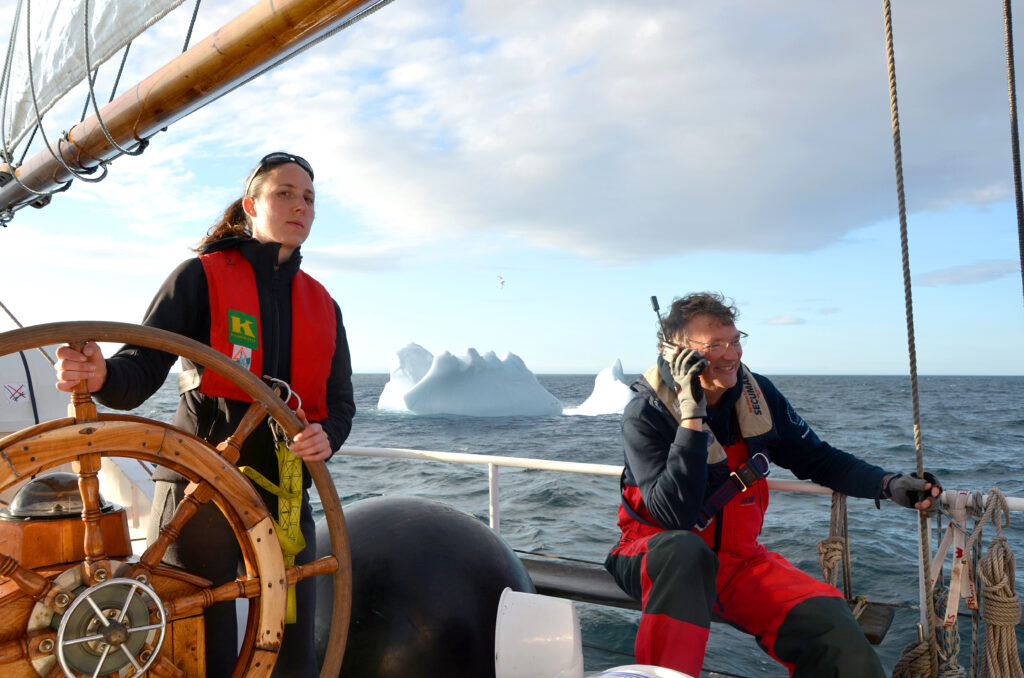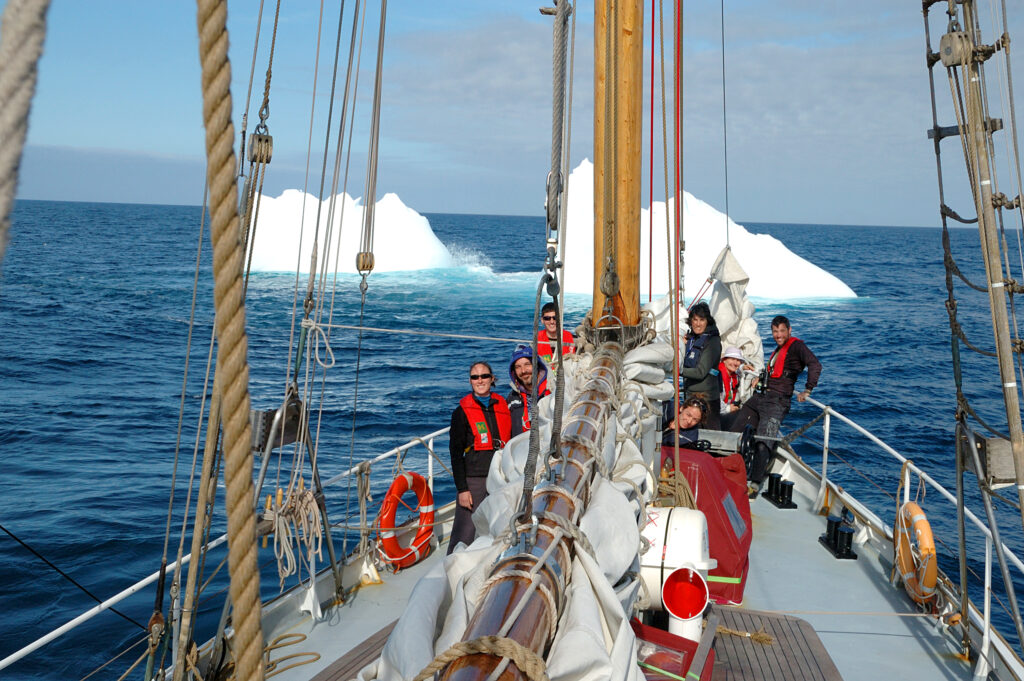Dilemma Management
On a ship under sail you learn to make decisions at any time.
Be it questions about technology, the destination of the tour, dealing with the crew or the daily sailing routine. Regularly, decisions have to be made and responsibility taken for how contradictory answers to questions are decided.
Anyone who has learned to deal with dilemmas while leading a ship will also be able to do so in everyday business. In staff interviews with managers from the Hamburg Elbe region, I have met one or two sailors who were youth cutter leaders. Without exception, they were outstanding managers who had already learned in their youth, at the age of 16, to take responsibility for an open cutter and 8 kids, who sailed extended trips without an engine and skippered everyone back home safely.

Here are a few examples of dilemmas we have encountered on board:
No more fuel!!
On a return trip from Helgoland to Cuxhafen, we decided to forego filling up the reserve canister for our 6 hp outboard in favour of a departure time that matched the tide.
After an unfavourable wind shift with a corresponding hack against the wind, we needed the engine more than planned. I will never forget the anxious seconds with the tank held at an angle before entering Cuxhaven with the RoRo ramp downstream breathing down my neck!
In Cuxhafen, the way to the next petrol station was then four times as long and costly as on Helgoland!

LEARNING: After that we never again did NOT go to refuel and always set off with a full tank and plenty of reserve. For example, when we crossed the North Atlantic from Hamburg to Quebec with the TS Roter Sand, we reached St. John / Newfoundland with 50% fuel reserve.
OBVIOUSLY…yet it happened to us again recently:
While transferring a modern motor trawler with a travelling speed of 20 kn, we calculated a fuel reserve of 60 nm on a distance of 220 nm. That seemed sufficient, but….. Halfway through the journey, however, it was no longer sufficient, as the ship consumed more fuel than indicated by the computer system. To be on the safe side, we decided to change the destination port to shorten the distance by 20 nm. 10 nautical miles from the destination, it didn’t fit again and despite an economy trip of 6 knots, the fuel gauge dropped from 60 litres to 0 litres in sight of the new destination port and stayed there.
What to do? Anchor at 40m water depth on the rocky coast in lee shore to fetch diesel with the dinghy?
Or risk the rocky entrance and gamble on a faulty gauge?
Or drift with an empty tank and call for external help?
We prepared for all eventualities, so rigged the dinghy and tow line and headed very, very slowly into the harbour with the engine engaged, only to find that there were 20 jetskis blocking the fuel station! After an anxious time of bustling and discussing with the waiting vessels, we were able to make a line connection and refuel, lucky us!
Follow international law or grant solidarity among environmentalists?
During the transfer of the Roter Sand, I had to decide on several dilemmas that had a tragic character.
Tragedy always arises when both decision options lead to disadvantage.
This is the stuff of legends: no matter what the hero does – he fails!
In the middle of the Atlantic, I realised that during the crew change in Shetland some of the crew had smuggled in a passenger who did not have a visa for Canada. I had only checked the passports of the new crew and had not considered that, unlike Europeans, Brazilians need a visa for Canada. This part of the crew had planned to first go ashore with the ship in the lonely Newfoundland north and thus smuggle their fellow environmentalist into the country illegally.
A storm forced us to change the route with St. John as the port of embarkation, making the planned venture impossible. So these renegade crew members started a mutiny in the middle of the Atlantic and wanted to take control of the ship and the course. I was able to avert the mutiny with the help of the loyal crew members and then slept only by the hour and with a firearm at the ready.


My cook on board, an experienced nurse, pointed out to me that the illegal sailor was regularly using syringes. I then confronted him and, with his consent, made an official visitation of his bunk and luggage. It turned out that he was in possession of various drugs, which he injected himself with in the toilet and for which no prescriptions were available despite his painful condition. Additional problems on board, then, due to illegal drugs and an inoperable crew member who was a danger to himself and others!!!!
CONCLUSION: I immediately put him off watch for his own protection, he was no longer allowed on deck unaccompanied and we notified the Canadian authorities. After that, I was the “German Nazi” for the rebellious half of the crew.
Until we entered St. John, the released crew member took care of himself under medical supervision, and shortly before we reached the harbour we destroyed all illegal drugs. Customs came on board with many formalities in tow and put the illegal immigranton the next plane back to his home country Brazil; the mutinous part of the crew was immediately exchanged for reliable members and had to disembark.
To avoid the occurrence of conditions that can lead to dilemmas, I have adopted 5 principles:
Take your time
Do not sail under time pressure, e.g. one third for the outward journey, two thirds for the return journey. Hectic and deadline pressure lead to accidents.
Transparency for all on board
The skipper clarifies the situation and his assessment of it; who goes along, agrees with the proposal and bears the consequences on his own responsibility fully. Who does not agree, stays ashore and finds other possibilities supported by us.
Reflexion
Safety reserves are a priority.
5.
Crew comes first!
Above all other needs, the health and safety of the crew has the highest value on board.

